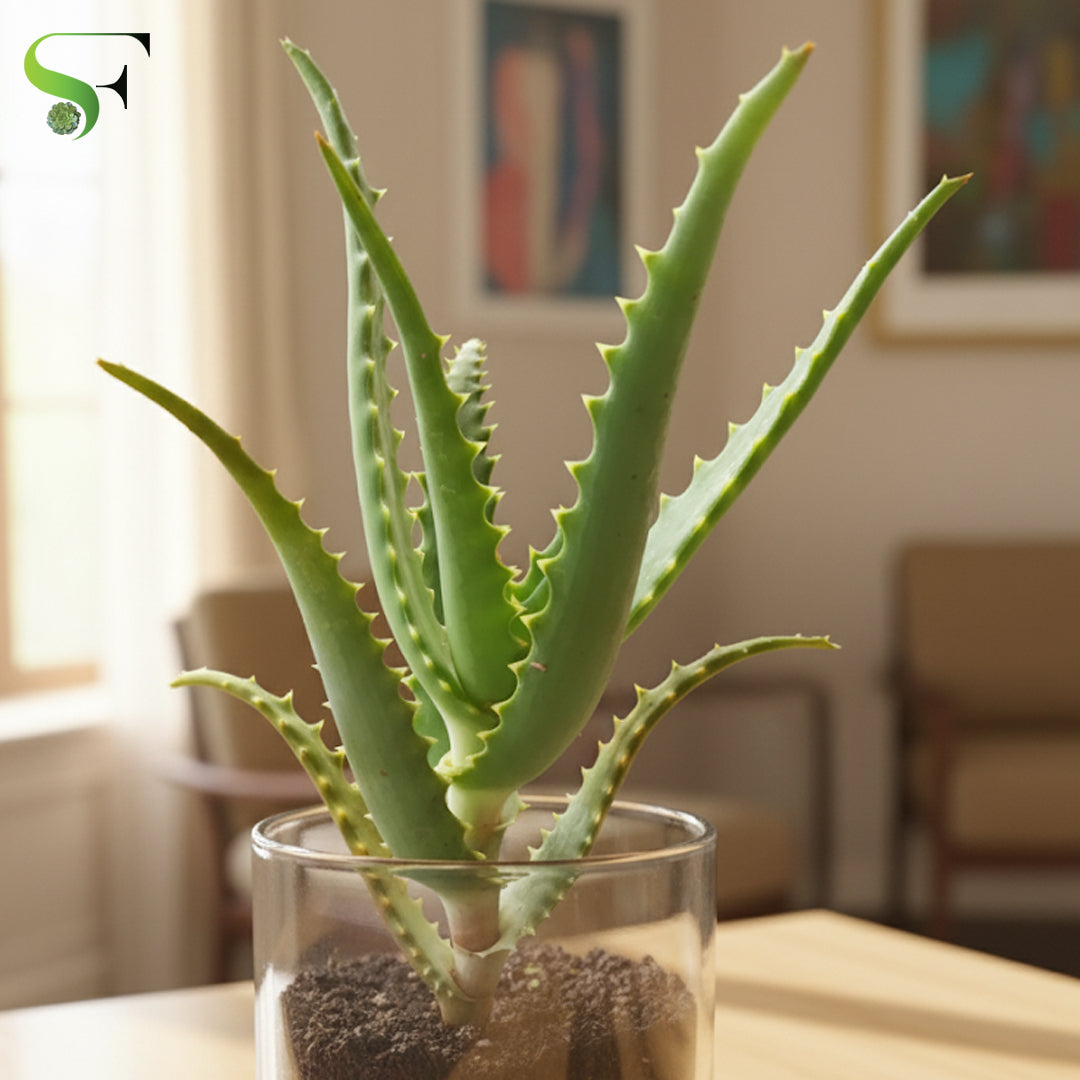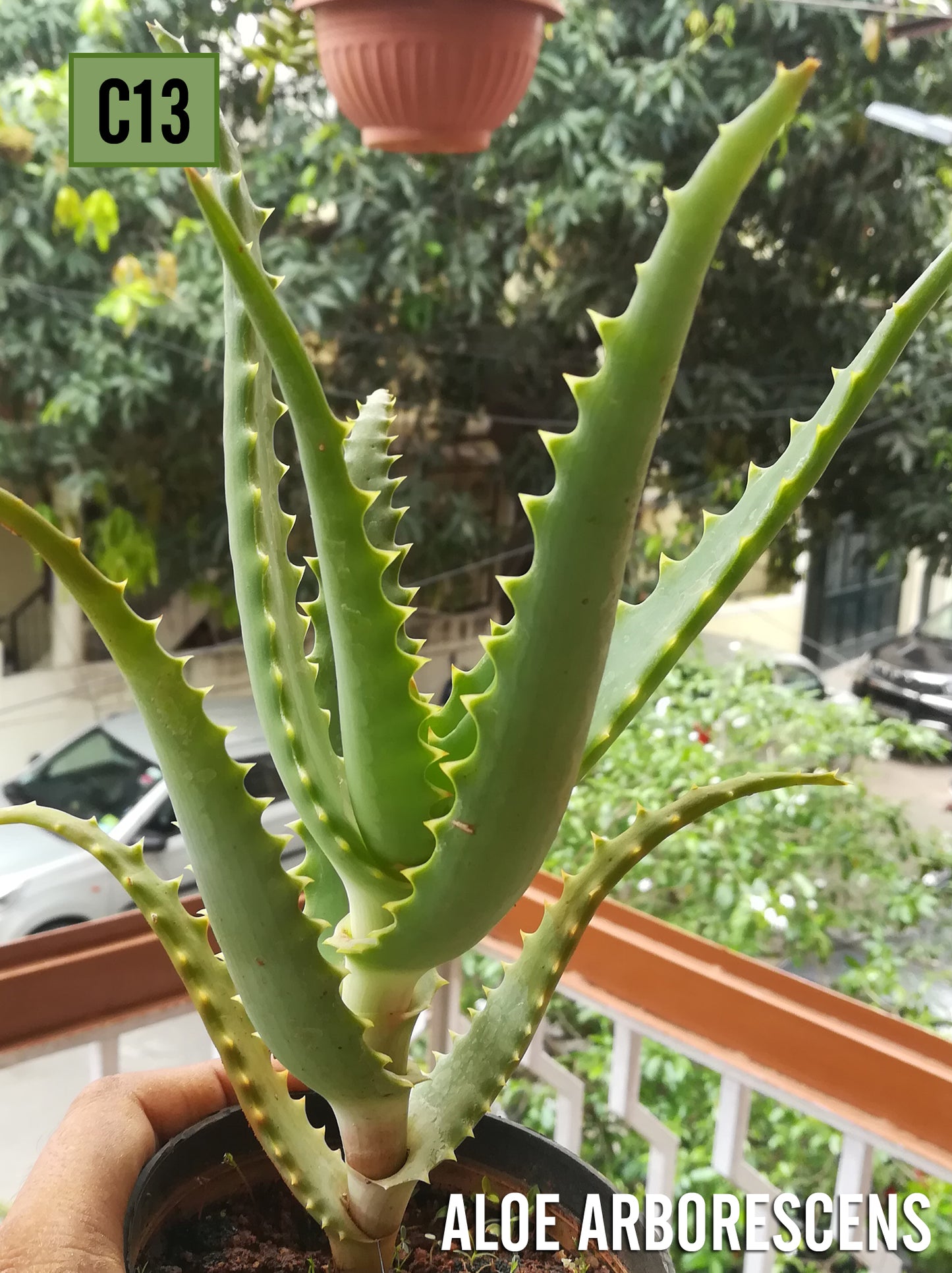Aloe Arborescens
Aloe Arborescens
Couldn't load pickup availability
ALL THE PLANTS WILL BE SENT BAREROOTED. NO POTS. NO SOIL
Aloe Arborescens: The Krantz Aloe Guide
The Aloe Arborescens, commonly known as the Krantz Aloe or Candelabra Aloe, is a magnificent succulent with a tree-like growth habit. Native to Southern Africa, this plant is much more than just a decorative succulent. It's renowned for its impressive size, branching stems, and show-stopping, fiery orange-red flower spikes that bloom in winter. It is also celebrated for its medicinal properties, often used in traditional remedies for its skin-soothing and healing benefits.
Growing Tips
-
Light: Aloe Arborescens loves bright light and thrives in full sun. To encourage robust growth and the beautiful red stress coloration of its leaves, place it in a location that receives at least 6-8 hours of direct sunlight daily. While it can tolerate partial shade, too little light will result in leggy growth and a lack of flowering.
-
Temperature: This plant is more cold-hardy than many other aloes, tolerating brief dips in temperature down to 20°F (-6°C) but it is not frost-proof. It performs best in mild climates with temperatures between 50°F and 80°F (10°C to 27°C). If you live in a region with cold winters, it's essential to grow it in a pot that can be moved indoors or to a protected area.
-
Watering: Aloe Arborescens is drought-tolerant and requires a "less is more" approach to watering. The key is to water deeply but infrequently. Allow the soil to dry out completely between waterings to prevent root rot, a common killer of succulents. Reduce watering significantly during the cooler, dormant months. A sign of thirst is when the leaves start to curl inward.
-
Soil Preparation: A well-draining soil mix is paramount for this plant's health. Use a specialized cactus and succulent mix, or create your own by blending regular potting soil with gritty materials like coarse sand, perlite, or pumice. This ensures excellent aeration and allows excess water to drain away quickly. A pot with a drainage hole is absolutely necessary.
-
Propagation: Propagating Aloe Arborescens is quite easy, especially from cuttings.
-
Stem/Branch Cuttings: This is the most popular method. Use a clean, sharp knife to cut a section of a stem or one of its branching "arms."
-
Callous: Allow the cut end to dry and form a hard callous for several days to a week. This crucial step prevents the cutting from rotting once planted.
-
Planting: Once the cutting has calloused, plant it in a pot filled with well-draining succulent soil.
-
Rooting: Place the pot in a warm spot with bright, indirect light. Water very sparingly, just enough to moisten the soil, until roots begin to form (this can take a few weeks). Once rooted, you can resume a more regular watering schedule and move it to a sunnier location.
-
Pups: Aloe Arborescens will often produce "pups" or offsets at its base. These small plants can be carefully separated from the mother plant and repotted once they have their own root system.
-
#SEO #Hashtags
#AloeArborescens #KrantzAloe #SucculentCare #PlantPropagation #DroughtTolerant #CandelabraAloe #GardeningTips #MedicinalPlants #SucculentLover #LowMaintenancePlants #OutdoorGardening #Houseplants #Xeriscaping #SucculentGarden #PlantParent
Share




